Roasted Garlic Compound Butter Recipe
Have you ever made roasted garlic compound butter? If not know this, compound butter is the ultimate secret weapon of chefs. I am thrilled to share a roasted garlic compound butter recipe that will elevate your culinary creations to new heights.
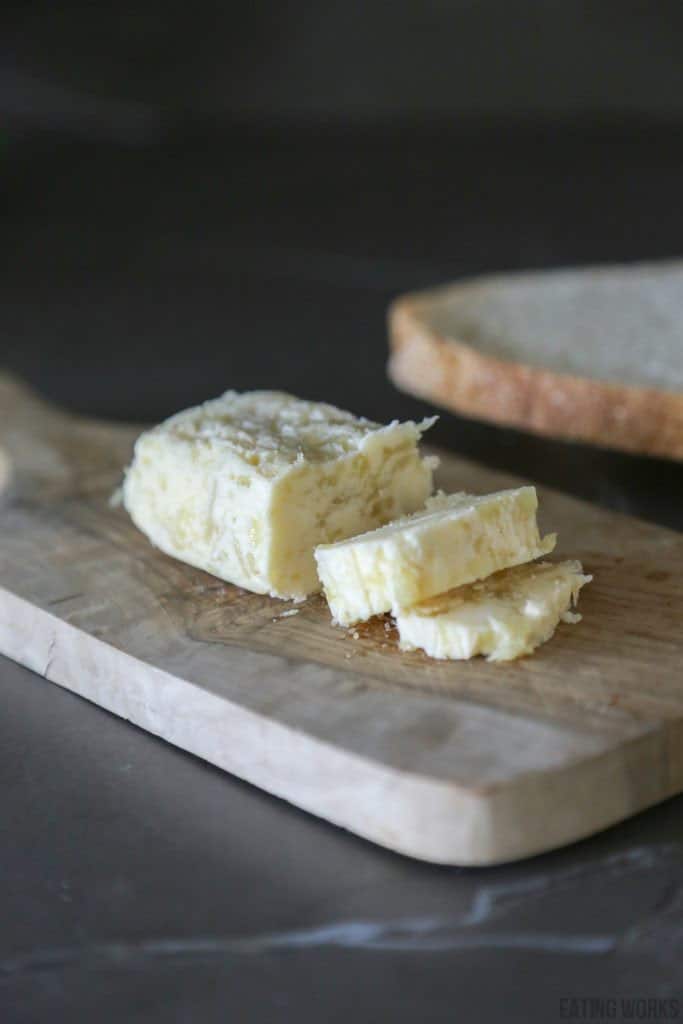
Garlic compound butter is going to turn your home cooked meals into culinary creations worthy of any five star restaurant in the United States.
If you’ve never heard of compound butter before, don’t worry, I’ll break it down for you. Trust me, this is one recipe you won’t want to miss.
This post may contain affiliate links. As an Amazon Associate I earn from qualifying purchases at no cost to you. See my Affiliate Disclosure to read my policy and more about affiliate links.
Table of Contents
- Why is it Called Compound Butter?
- Why You’ll Love this Roasted Garlic Compound Butter Recipe
- Ingredients for Roasted Garlic Compound Butter
- How to Make Roasted Garlic Compound Butter
- How to soften butter in the microwave:
- Equipment for Roasted Garlic Compound Butter
- How to Store Roasted Garlic Compound Butter
- Which Type of Butter is Best for Making Compound Butter?
- Is Roasted Garlic Compound Butter Keto Friendly?
- Is Compound Butter Gluten Free?
- Recipe Variations: Can I Add Fresh Herbs?
- How Long Does Garlic Compound Butter Last?
- What Does Roasting Garlic Do to the Flavor?
- Why Do Chefs Use Compound Butter?
- Common Questions and Answers
- What to Serve With Garlic Compound Butter
Why is it Called Compound Butter?
Before we dive into the delicious details, let’s explore the fascinating origin of compound butter. You might be wondering, why is it called compound butter?
Well, the term “compound” refers to the process of incorporating additional flavors into butter, creating a delightful fusion of tastes and aromas. It’s like taking plain butter and turning it into a flavor-packed masterpiece!
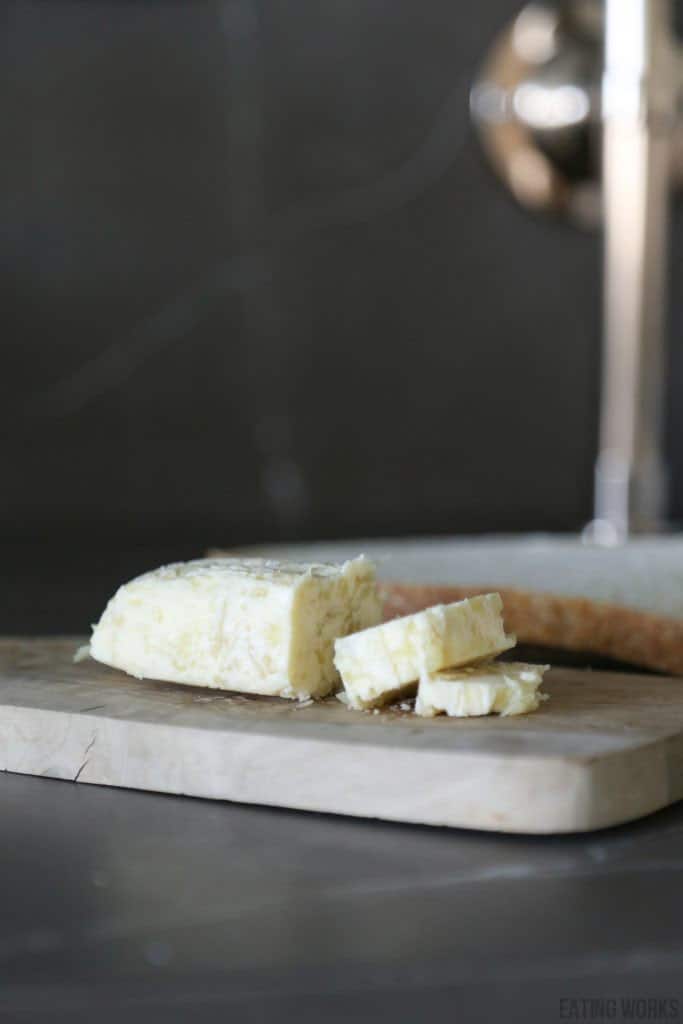
Compound butters are used to enhance the flavor of cooked dishes. The most popular use for compound butters is to slather it on steaks.
If you’re not a meat eater don’t worry, you can use compound butter on roasted vegetables, bread and more. The applications for compound butter are seemingly endless.
If you’re wondering who came up with compound butter, you shouldn’t be surprised that it was the French. Compound butter was invented in France where it is referred to as beurre compose.
Why You’ll Love this Roasted Garlic Compound Butter Recipe
I know you’re going to love this compound butter recipe. I made it a few years ago for Thanksgiving and I served it with my famous vegan challah. Everyone went nuts for it. They’re still talking about the garlic butter years later.
Garlic compound butter is a great way to add flavor to a gluten free, vegetarian or keto diet. If you aren’t entirely vegan you can also enjoy it.
This Roasted Garlic Compound Butter Recipe is:
- Vegetarian
- Gluten Free
- Low Carb
- Keto Friendly
- Paleo Friendly
- Nut Free
- Soy Free
- Only 3 Ingredients
- Easy to Make
Ingredients for Roasted Garlic Compound Butter
- Butter
- Olive Oil
- Garlic
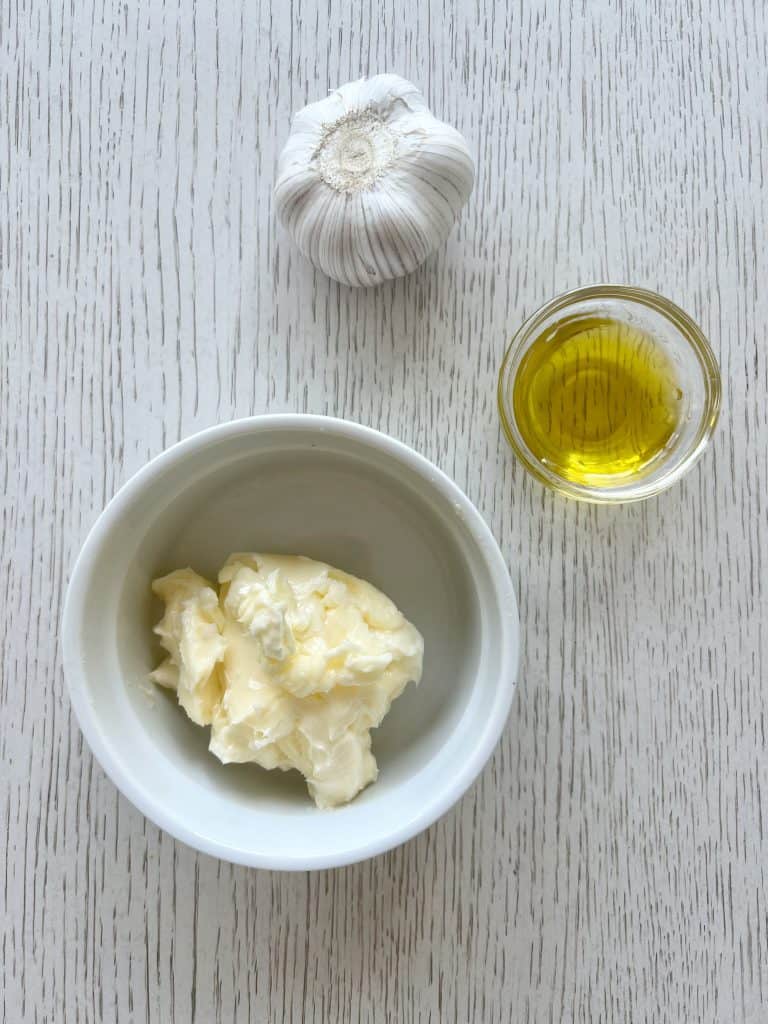
How to Make Roasted Garlic Compound Butter
It couldn’t be easier to make roasted garlic compound butter. Once you master roasting the garlic you’re good to go!
- 2 hours ahead remove butter from the fridge and leave at room temperature to soften. Preheat oven to 325 F. Slice the garlic clove horizontally so that each clove is cut but the root ball can still hold it together. Coat with olive oil and season with salt. Wrap the garlic in foil and cook for 20 minutes. Remove from the oven and mash the garlic cloves into a paste.
- Stir the garlic paste into the compound butter until a even butter is formed. For smoother butter use a food processor to combine the butter and garlic.
- Pour the compound butter onto a piece of plastic wrap. Roll the butter in the plastic to form a log. Place the plastic wrapped butter in the fridge and allow it to harden.
- Once the butter is hard. Remove it from the plastic and enjoy.
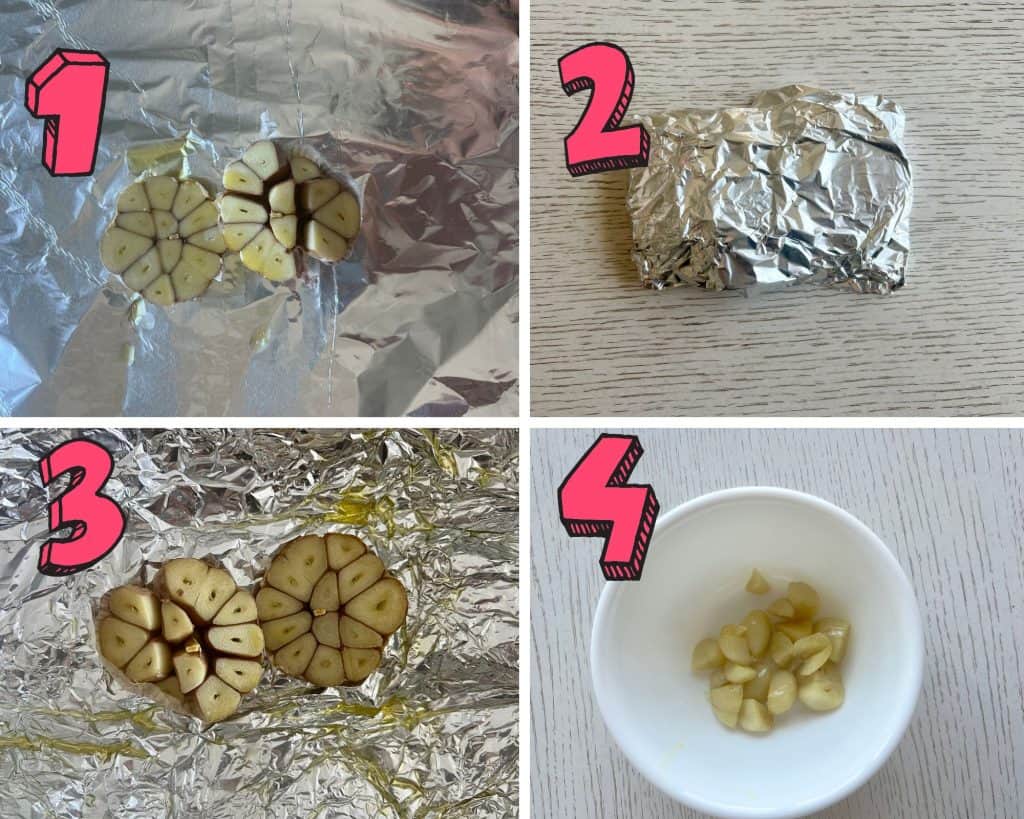

Detailed instructions on how to roast garlic:
Here’s a step-by-step guide on how to roast garlic to perfection:
- Start by taking a whole garlic bulb and carefully slice it in half horizontally. Make sure the cut splits each clove but keeps them connected at the root ball. This will help hold the cloves together during the roasting process.
- Drizzle the exposed cloves with a generous amount of olive oil, ensuring they are well coated. Season with a pinch of salt and pepper to enhance the flavors.
- To seal in the moisture and ensure even cooking, tightly wrap the garlic bulb in aluminum foil. This will create a little garlic packet that traps the heat and allows the cloves to steam and soften as they roast.
- Preheat your oven to 325°F (163°C). Place the wrapped garlic bulb on a baking sheet or in a small oven-safe dish, and then slide it into the preheated oven. Let it roast for approximately 20 minutes. The low and slow cooking method will gradually transform the pungent raw garlic into a mellow and savory delight.
- Once the roasting time is up, carefully remove the garlic from the foil, as it will be hot. Set it aside to cool for a few minutes. During this time, you’ll notice that the garlic cloves may appear slightly wet, which is a good sign that they are fully cooked and ready to be transformed into a creamy paste.
- To extract the roasted garlic cloves from their papery skins, gently squeeze the base of each clove. The softened garlic will easily slide out, leaving the skin behind.
- Place the roasted garlic cloves on a cutting board or in a bowl. Using a fork, mash and stir the cloves until they form a smooth and creamy paste. This process releases the aromatic oils and combines the flavors, creating a luscious roasted garlic paste.
How to soften butter in the microwave:
- Start by taking the desired amount of butter from the refrigerator. Ensure that it is in a microwave-safe container or dish.
- Remove any wrapping or packaging from the butter, making sure it is entirely unwrapped.
- Place the butter in the microwave, making sure it is centered and not touching the sides of the microwave.
- Set the microwave to low power or the defrost setting. It’s important to avoid using full power, as it can easily melt the butter instead of softening it.
- Microwave the butter for 5-second intervals. Start with 5 seconds and then check the butter’s consistency. If it is still too firm, continue microwaving in additional 5-second bursts.
- After each 5-second interval, carefully remove the butter from the microwave and check its softness. Gently press the butter with a fork or your fingers to see if it yields to gentle pressure. If it feels soft and pliable, it is ready. If it is still too firm, return it to the microwave for another short burst.
- Repeat the process of microwaving in 5-second intervals until the desired softness is achieved. Be cautious not to overdo it, as the butter can quickly turn into a melted mess.
- Once the butter has reached the desired softness, carefully remove it from the microwave. Give it a gentle stir with a spoon or a fork to ensure the softened consistency is evenly distributed.
Equipment for Roasted Garlic Compound Butter
- Tinfoil
- Plastic Wrap
- Bowl
- Spatula
- Food Processor (optional)
You don’t need any fancy equipment to make garlic butter. But if you want extra smooth compound butter you can use a food processor to combine the butter and roasted garlic.
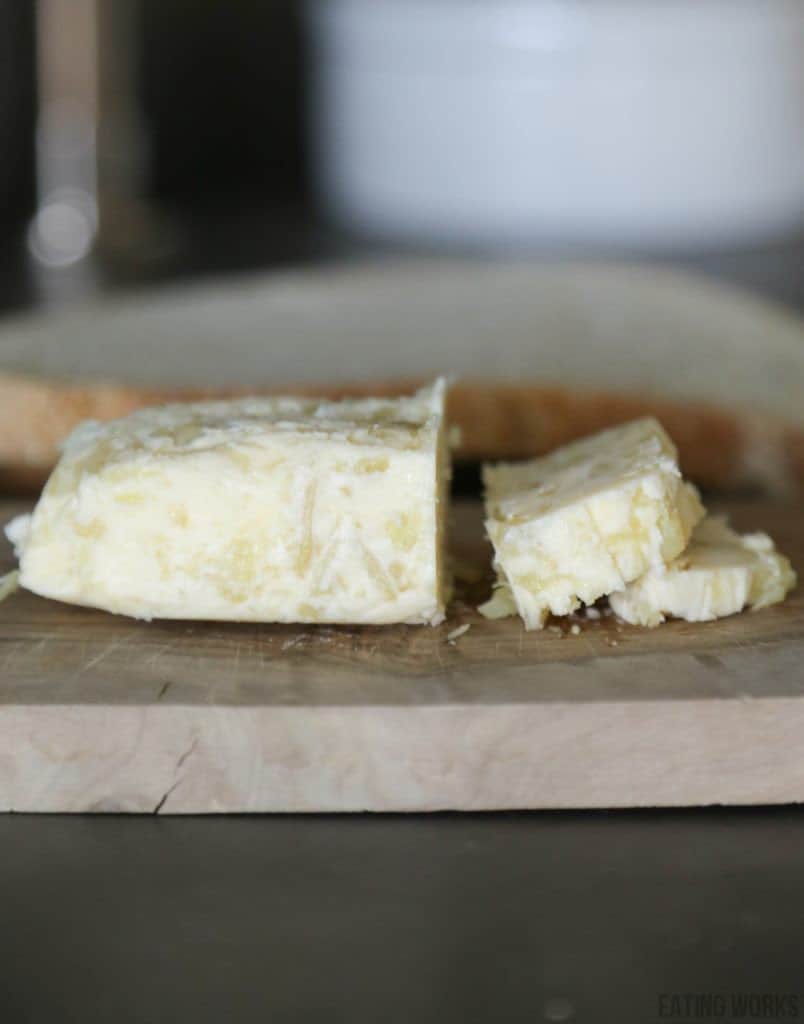
How to Store Roasted Garlic Compound Butter
The best way to store roasted garlic compound butter is to place it in a butter tray in the fridge. That’s why I like to roll it into a log. If you have a butter dish on hand try to form the butter into a shape that will fit into the butter dish.
So your log should be the size of a store bought stick of butter.
Can you freeze garlic butter?
Yes, you can freeze garlic butter for up to three months. Just be sure to wrap the butter well in plastic wrap and store it in ziplock freezer bags.
Can you make garlic compound butter without a food processor?
Yes you can make garlic compound butter without a food processor. In fact, this recipe doesn’t use a food processor at all! Some recipes call for a food processor to make the garlic butter extra smooth.
I think this is a great idea if you want smooth garlic butter but it’s not necessary. I like little chunks of roasted garlic in my garlic butter!
Can you use a blender to make garlic butter instead of a food processor?
If you don’t have a food processor but you still want smooth garlic butter, you can use a blender.
- If you use a blender make sure your butter is totally melted. This will make it easier to pour the butter in and out of the blender.
- Blend the melted butter with roasted garlic and then pour the butter into a dish to allow it to harden.
- Once the butter is semi solid you can roll it into a log.
Which Type of Butter is Best for Making Compound Butter?
I think that the best type of butter to make compound butter is unsalted organic butter. I use unsalted organic butter for everything. Regular butter has a lot of salt added which can alter the flavor of your food.
Not to mention that high sodium butter is bad for your kidneys and heart. If you use salted butter it’s hard to know how much sodium you’re consuming.
For anyone with kidney or heart disease, it’s important to keep track of your sodium intake.
One bright side of using salted butter is that salt is a natural preservative. So garlic butter made with salted butter will stay fresh outside of the fridge for longer periods of time then compound butter made with unsalted butter.
Is Roasted Garlic Compound Butter Keto Friendly?
Yes, roasted garlic compound butter is keto friendly. Butter is a favorite food among keto fans because it’s 80% fat and has zero carbs.
Is Compound Butter Gluten Free?
This garlic butter is gluten-free. The basic components of garlic butter are garlic and butter, both of which are naturally gluten-free.
To ensure that your garlic butter is gluten-free, it’s recommended to use a, pure butter that is labeled gluten-free or known to be gluten-free. This will guarantee that there are no cross-contamination risks or hidden sources of gluten in the butter itself.
Also make sure to only use a clean knife to cut into your garlic butter. If a knife is used to butter bread and then dipped into the butter, the butter is now contaminated with gluten.
By using gluten-free ingredients and being mindful of any potential cross-contamination risks, you can easily make gluten-free garlic butter to enjoy without any concerns.
Recipe Variations: Can I Add Fresh Herbs?
If you want to make your garlic compound butter extra special here are a few ideas. Yes you can add fresh herbs to your garlic butter. Just keep in mind that adding fresh herbs and other ingredients that spoil quickly will shorten the shelf life of the final product.
- Herb-infused Garlic Butter: Incorporate fresh herbs into your compound butter for a vibrant and aromatic twist. Finely chop herbs like parsley, thyme, rosemary, or basil and mix them into the softened butter along with the roasted garlic. The combination of herbs and garlic will add complexity and freshness to your butter.
- Lemon Garlic Butter: Add a zesty and citrusy kick to your compound butter by incorporating lemon zest and freshly squeezed lemon juice. The bright acidity of lemon complements the rich garlic flavor beautifully. Start with a small amount of zest and juice, taste, and adjust according to your preference.
- Chili Garlic Butter: For those who enjoy a bit of heat, add a spicy kick to your compound butter by mixing in some chili flakes or minced chili peppers. This variation adds a delightful fiery flavor that pairs well with grilled meats or roasted vegetables.
- Roasted Red Pepper and Garlic Butter: Roasted red peppers add a smoky and slightly sweet flavor to the butter. Puree roasted red peppers and mix them into the compound butter along with the roasted garlic. This variation is perfect for adding a vibrant and colorful touch to your dishes.
- Parmesan Garlic Butter: For a cheesy twist, grate some Parmesan cheese and mix it into the compound butter along with the roasted garlic. The savory and nutty flavor of Parmesan complements the garlic beautifully, making it an excellent choice for pasta, bread, or grilled dishes.
- Honey Garlic Butter: Create a sweet and savory blend by adding a touch of honey to your compound butter. The honey adds a subtle sweetness that balances the garlic’s pungency, creating a harmonious flavor combination. Adjust the amount of honey based on your desired level of sweetness.
What herbs go well with garlic?
What herbs don’t go well with garlic? I think it should be a universal law that garlic goes well with everything. But some of the herbs that I think go well with garlic are:
- Basil
- Oregano
- Parsley
- Chives
- Thyme
- Rosemary
How Long Does Garlic Compound Butter Last?
Roasted garlic lasts for up to two weeks in an airtight container and butter lasts for months. So roasted garlic butter will last for up to 10 days in the fridge if stored in an air tight container or butter dish.
If you add fresh herbs or cross contaminate your garlic butter then it will only last for up to 5 days in the fridge.
What Does Roasting Garlic Do to the Flavor?
Roasting garlic caramelizes it and brings out the natural nuttiness and sweetness in raw garlic cloves.
Why Do Chefs Use Compound Butter?
Chefs use compound butter to add extra flavor and complexity to a dish. Compound butter will help elevate the flavor of steak, chicken, roasted vegetables or even a simple dinner roll.
Common Questions and Answers
Does compound butter make a difference?
Absolutely! Compound butter can make a significant difference in your culinary creations. It’s a versatile and flavorful ingredient that can elevate the taste and presentation of various dishes. Here’s why compound butter makes a difference:
Enhanced Flavor: Compound butter allows you to infuse different flavors into the butter itself. By combining ingredients like herbs, spices, garlic, citrus zest, or even cheeses, you can create a unique and flavorful butter that complements your dishes.
Customization: Compound butter provides the flexibility to customize flavors according to your preferences and the dish you’re preparing.
Moisture and Tenderness: When used in cooking, compound butter can help retain moisture and improve the tenderness of meats, poultry, or seafood.
Finishing Touch: Compound butter is often used as a finishing touch to dishes. By melting a knob of compound butter over cooked vegetables, grilled meats, or pasta, you add a final burst of flavor and richness.
Versatility: Compound butter can be used in a wide range of dishes and cooking techniques. It’s perfect for spreading on bread, melting over steaks, tossing with roasted vegetables, sautéing shrimp, or even baking into pastries.
Is compound butter the same as ghee?
No compound butter and ghee are different. Ghee is a clarified butter made by melting down regular butter and removing the milk solids. So ghee has less lactose in it and can be kept at room temperature.
Compound butter is simply regular butter with different ingredients added to it to create new flavors. Clarified and compound butter sound similar so I understand how you can easily mix them up!
Do I need to refrigerate compound butter?
If you use salted butter you don’t need to refrigerate compound butter. Salted butter will stay fresh at room temperature for up to 1 or 2 days because salt is a natural preservative.
Does compound butter go bad?
Yes compound butter will go bad after 1 to 2 days in the counter or after 10 days in the fridge.
What is the difference between regular butter and compound butter?
The difference between compound butter and regular butter is that compound butter has additional ingredients to flavor it and regular butter does not.
Can I leave compound butter out overnight?
Yes you can leave compound butter out overnight if it was made with salted butter. Although I don’t recommend leaving it out. It will last much longer if you keep it in the fridge.
How long does compound butter need to rest for?
Compound butter only needs to rest long enough to form a solid log. Which takes 10 minutes in the fridge. Of course letting it rest will enhance the flavor by letting the garlic infuse flavor into the butter.
Should compound butter be brought to room temperature before spreading it?
You don’t have to bring compound butter to room temperature before you spread it but it will make it much easier to spread! You can leave the butter out for a few minutes and it will soften up enough to spread before it reaches room temperature.
What is another name for compound butter?
Another name for compound butter is the French name beurre compose.
What to Serve With Garlic Compound Butter
- Grilled or Roasted Meats: Spread a pat of roasted garlic compound butter over grilled steaks, chicken, pork chops, or lamb to impart a savory and aromatic flavor. The butter will melt over the hot meat, enhancing its juiciness and adding a luxurious finish.
- Roasted Vegetables: Toss roasted vegetables, such as potatoes, Brussels sprouts, carrots, or asparagus, with a dollop of roasted garlic compound butter. The butter’s rich, garlicky notes will complement the caramelized flavors of the vegetables, elevating their taste to new heights.
- Breads and Rolls: Slather warm crusty bread or rolls with roasted garlic compound butter for a deliciously savory and aromatic spread. It’s a fantastic accompaniment for dinner rolls, baguettes, or garlic bread.
- Pasta and Risotto: Stir a spoonful of roasted garlic compound butter into hot cooked pasta or risotto for a luxurious and flavorful twist. The butter will melt into the dish, adding richness and enhancing the overall taste.
- Seafood: Melt a small amount of roasted garlic compound butter over grilled or sautéed seafood like shrimp, scallops, or lobster. The butter’s garlicky flavor will complement the delicate sweetness of the seafood, creating a delightful combination.
- Mashed Potatoes: Mix roasted garlic compound butter into creamy mashed potatoes for an extra layer of flavor. The butter will melt into the potatoes, infusing them with a delightful garlic essence.
- Corn on the Cob: Spread roasted garlic compound butter onto hot, cooked corn on the cob for a savory twist. The butter will melt into the sweet corn kernels, creating a mouthwatering and indulgent treat.
- Grilled Vegetables: Brush grilled vegetables, such as zucchini, eggplant, bell peppers, or mushrooms, with a bit of melted roasted garlic compound butter. It will add a deliciously aromatic and flavorful element to the smoky grilled veggies.
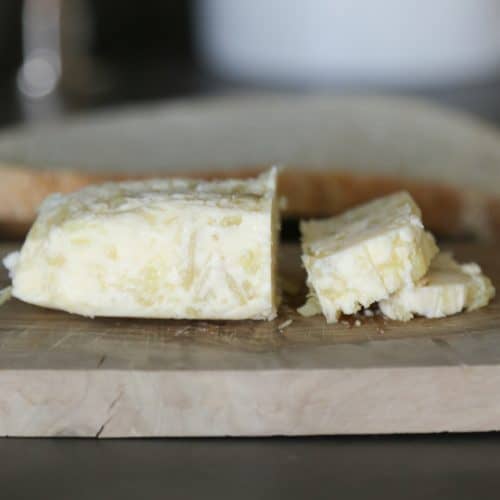
Equipment
- Tinfoil
- Plastic Wrap
- Bowl
- Food Processor optional
Ingredients
- 1 whole Garlic Bulb
- 1 tsp Olive Oil
- 8 ounces Butter
Instructions
- 2 hours ahead remove butter from the fridge and leave at room temperature to soften or soften in the microwave. Preheat oven to 325 F.
- Slice the garlic clove horizontally so that each clove is cut but the root ball can still hold it together. Coat with olive oil and season with salt. Wrap the garlic in foil and bake in oven for 20 minutes. Remove from the oven and mash the garlic cloves into a paste.
- Stir the garlic paste into the compound butter until a even butter is formed. For smoother butter use a food processor to combine the butter and garlic.
- Pour the compound butter onto a piece of plastic wrap. Roll the butter in the plastic to form a log. Place the plastic wrapped butter in the fridge and allow it to harden. Once the butter is hard. Remove it from the plastic and enjoy.
Nutrition
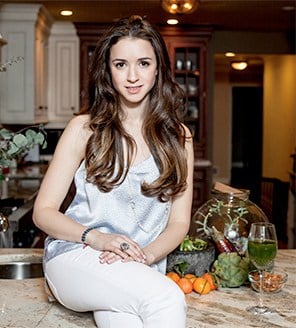
FREE 7 Day Gluten Free Meal Plan
A meal plan designed to jump start whole body healing and support digestive health……
…And get the latest recipes!

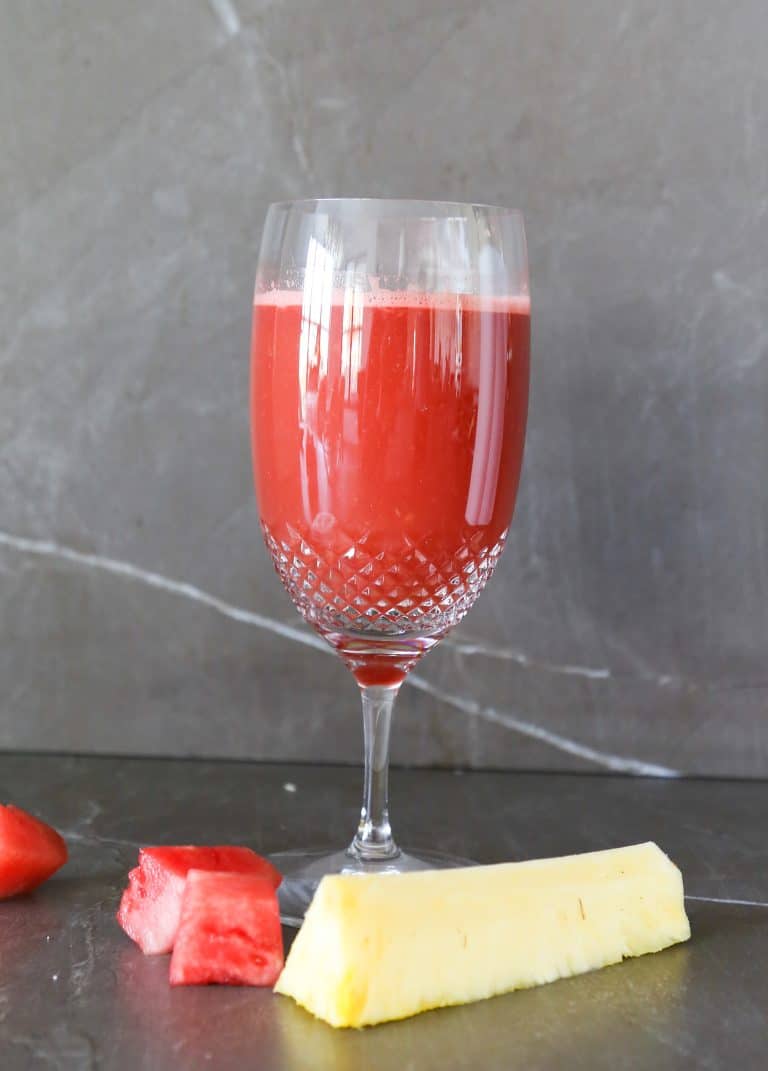
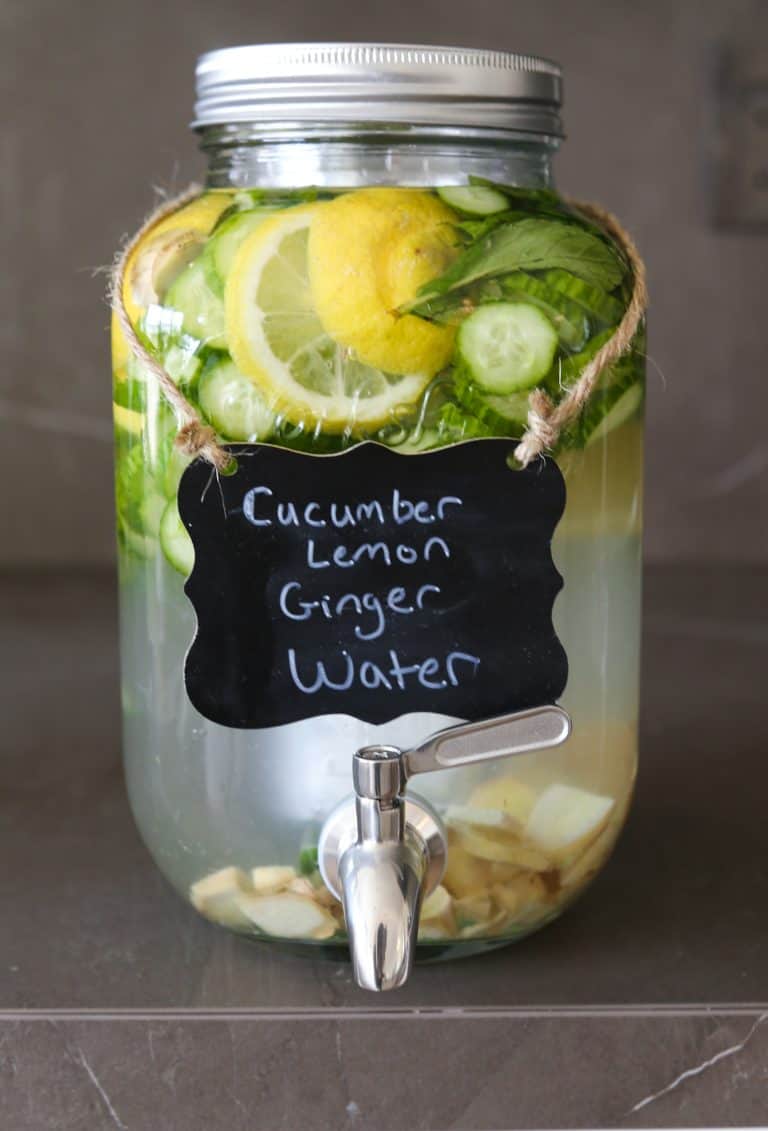
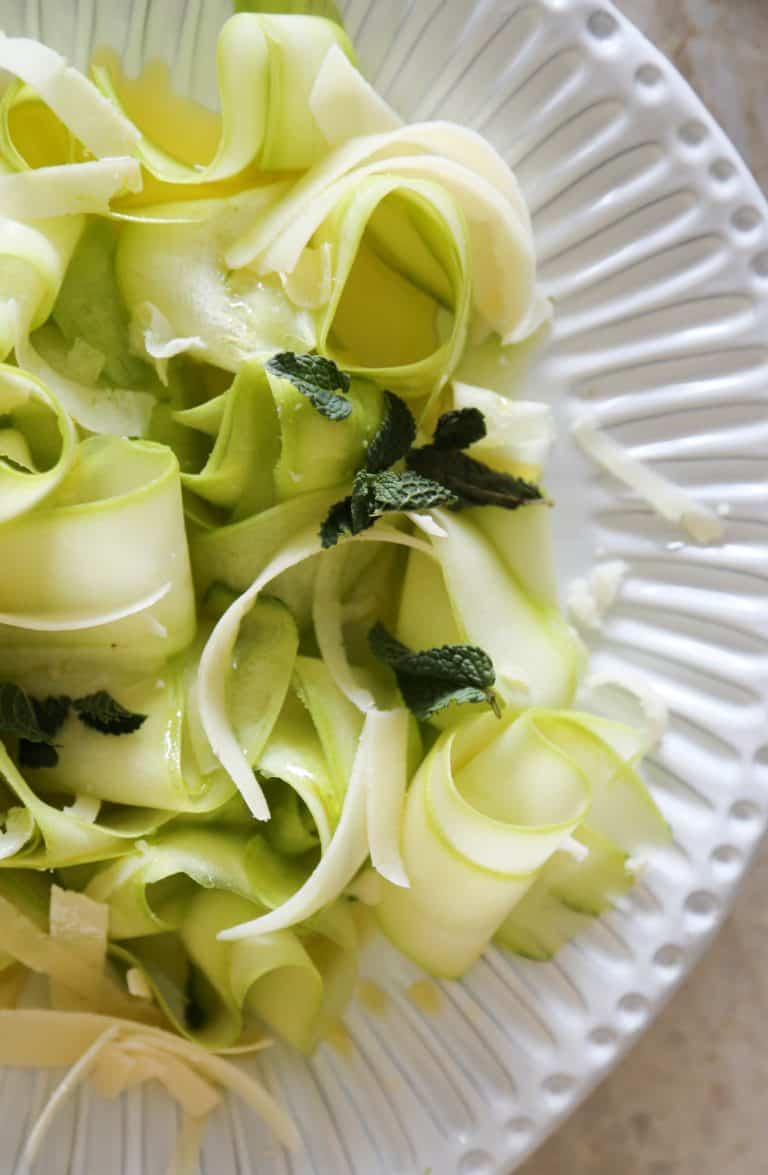
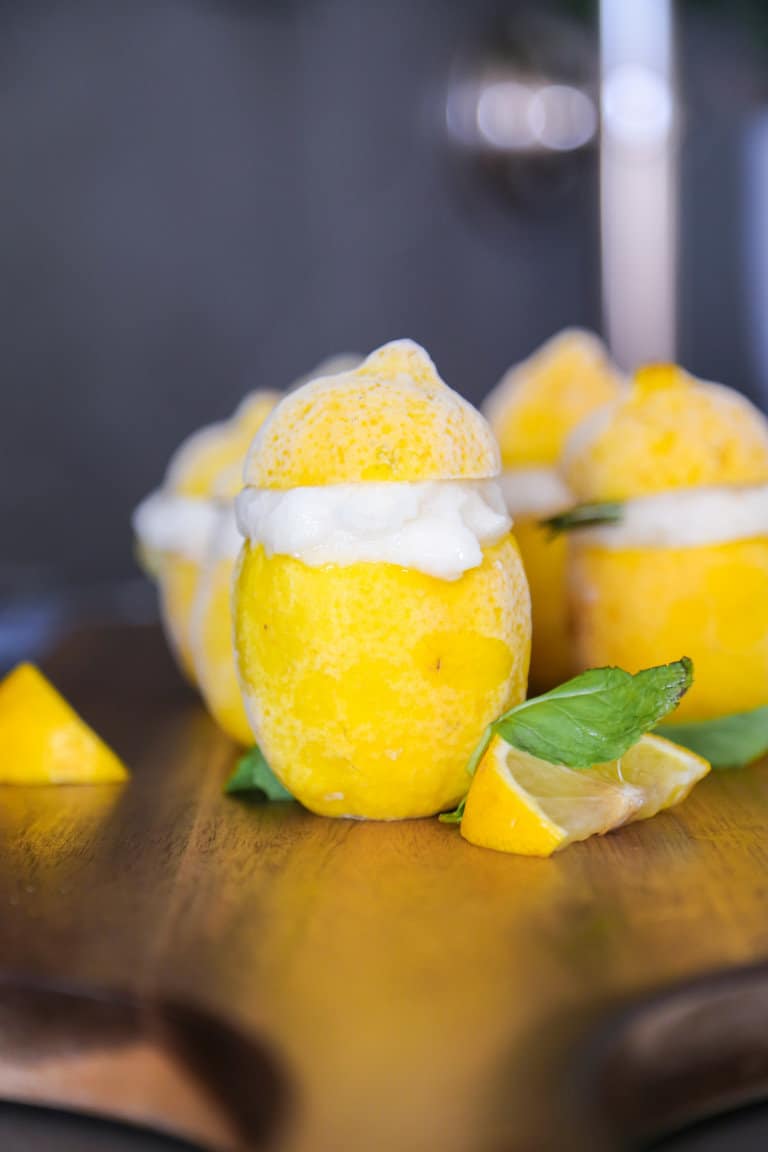
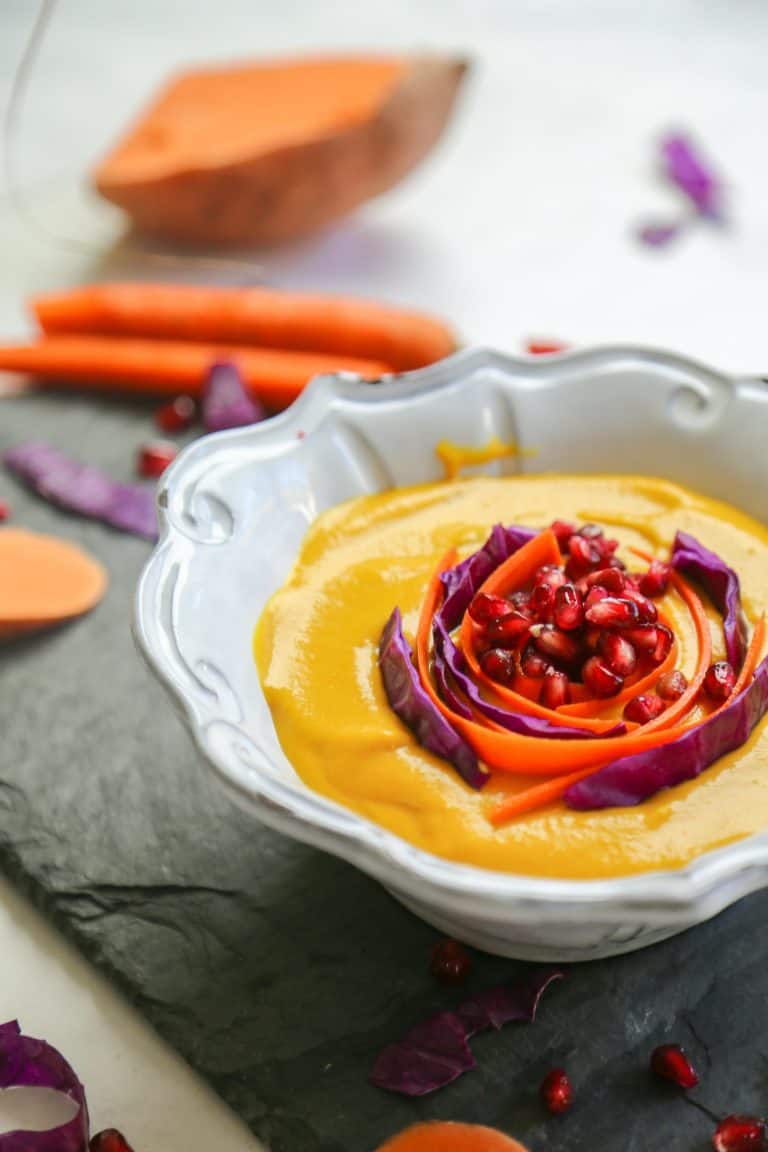
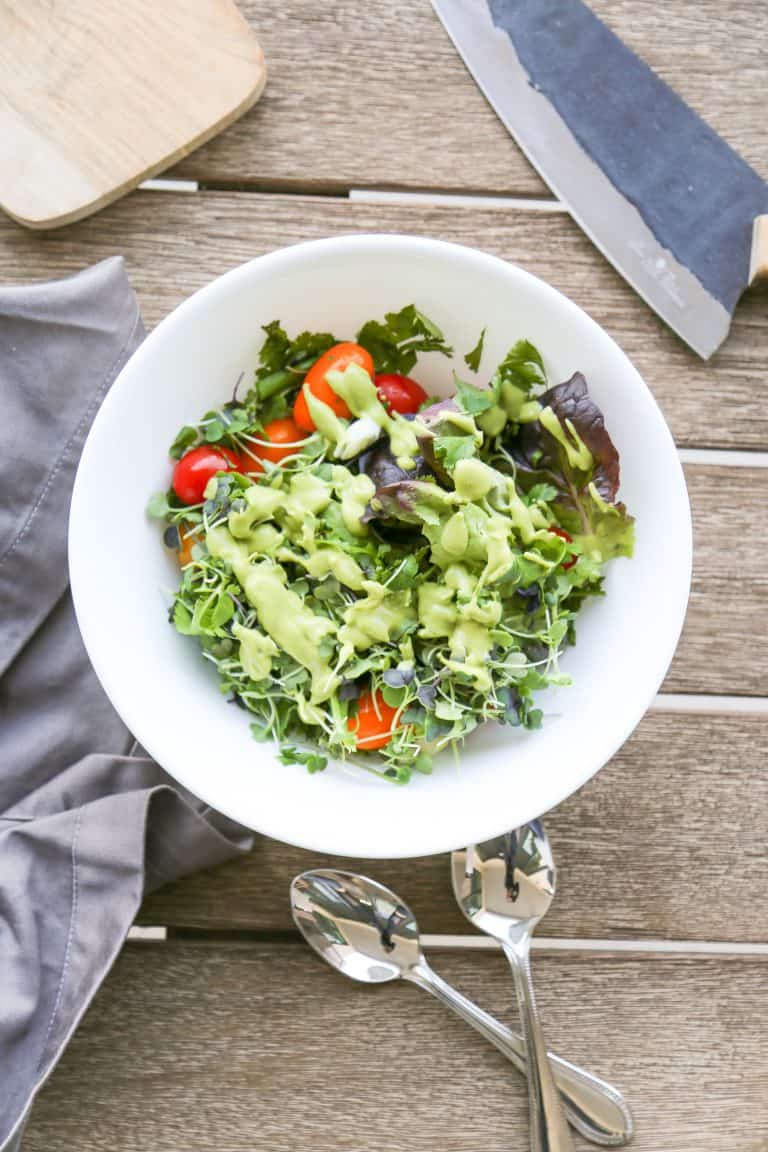
Goat cheese is one of the most expensive cheeses! 99.9 percent of your recipes use completely unaffordable ingredients. Such a damn shame.
Hi Rhina, Thanks for your comment. I use goat and sheep cheese because the casein molecule is much smaller (comparable to human milk) so it’s much easier to digest. Regular cow cheese leaches calcium from the bones and causes inflammation. I have no problem using affordable ingredients but not at the expense of health. After all, all of my recipes are designed for people with autoimmune disorders, inflammation, gluten intolerance and other health issues. Sometimes you do have to pay a bit more for quality in order to maintain your health. You can always buy soft goat cheese at Walmart or target which is only 3 dollars. If you would like healthy recipes with affordable ingredients I’m all ears for your requests. Some of my recommendations are my vegan split pea soup and moroccan red lentil soup. Both of which are super tasty and very affordable.
I love this. Butter is one of my favorite staples. I tried this on fresh sourdough bread… and omg it was fantastic!
Hey Joey! Thank you so much for your comment! I’m glad you enjoyed the butter on some bread. Can’t be the classics!